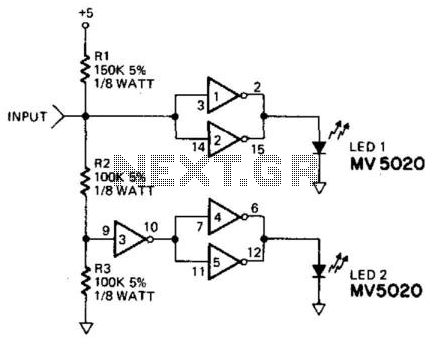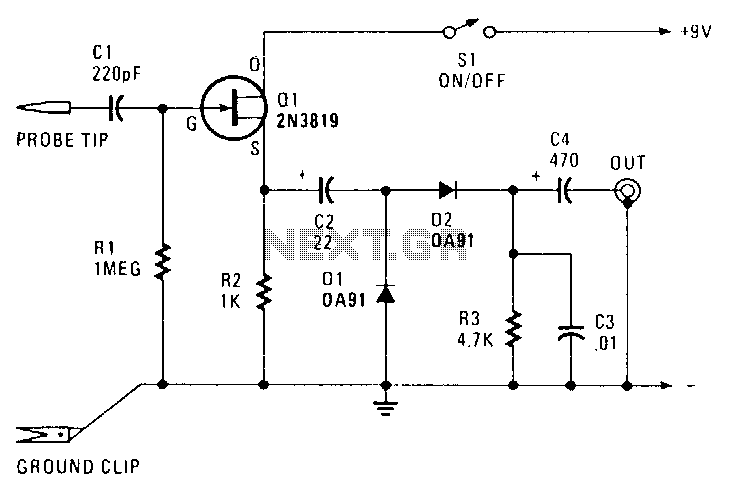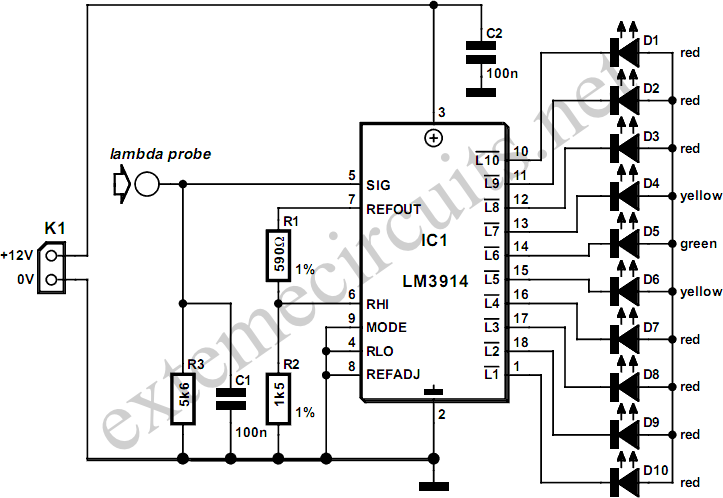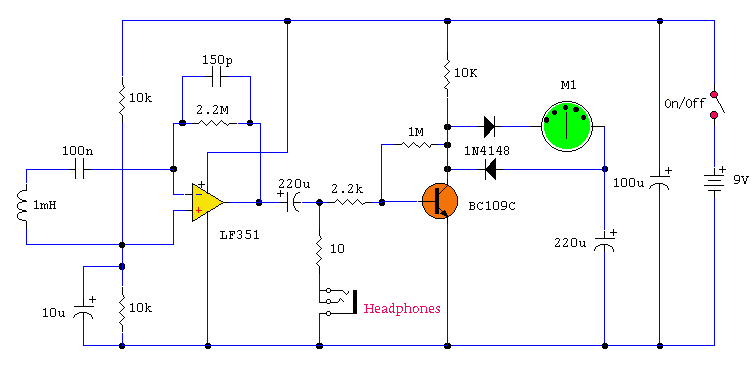
Microvolt probe
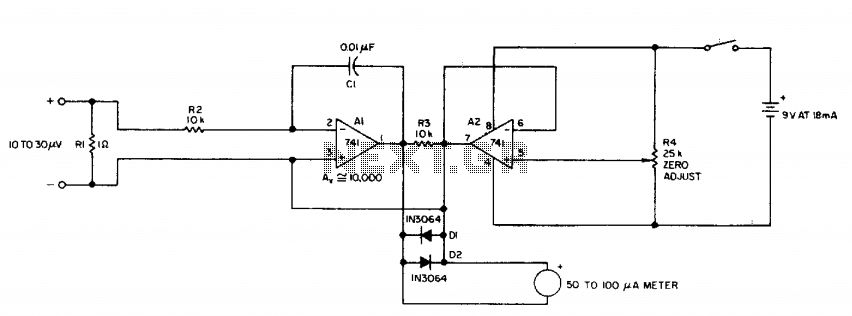
The current tracer is designed to identify a defective integrated circuit (IC) that is causing excessive loading on the power supply. It amplifies the small voltage drop that occurs due to current flow over a short length of printed circuit (PC) wiring and drives a standard microammeter. Needle-point test probes are employed to make contact with the edge of a PC trace, allowing the user to trace the current flow and determine the specific branch it follows. One half of a dual 741 operational amplifier (op-amp) functions as a DC amplifier with AC feedback, which helps to prevent oscillations and issues related to hum pickup.
It operates with a microammeter that ranges from 50 to 100 microamperes. The second op-amp provides a center tap for the 9V battery supply and allows for zero adjustment using resistor R4. Two diodes are included in the design to protect the microammeter. Resistor R1 is utilized to eliminate the need for shorting the probes when calibrating the meter to zero. Its resistance value of 1 ohm is significant when compared to the resistance of the meter leads and the bridged section of the PC wiring.
The current tracer circuit is a practical tool for diagnosing issues in electronic devices by allowing technicians to pinpoint faulty components without extensive disassembly. The use of a dual 741 op-amp not only ensures reliable amplification of the voltage drop but also integrates features that enhance stability and accuracy in readings. The DC amplifier configuration with AC feedback minimizes the risk of oscillation, which can lead to erroneous measurements, while the microammeter provides a clear and direct visual representation of current flow.
The design's inclusion of protective diodes serves to safeguard the microammeter from potential overcurrent situations that may arise during testing, thereby extending the lifespan of the instrument. The zero adjustment feature is critical for accurate measurements, enabling the user to calibrate the device easily before each use. The selection of a 1-ohm resistor for R1 is a strategic choice that balances sensitivity with practicality, ensuring that the circuit remains responsive without being overly affected by the inherent resistance of the test leads and wiring.
Overall, the current tracer serves as an essential diagnostic tool in the field of electronics, providing a methodical approach to identifying faulty ICs and ensuring optimal performance of electronic circuits.The current tracer helps locate a defective IC that is loading down the power supply. The tracer amplifies the small voltage drop caused by current flow along a fraction of an inch of PC wiring and drives an ordinary microammeter. Needle-point test probes are used to contatt the edge of a PC trace and to follow the current to determine which branch the current takes.
One-half of a dual 741 op amp forms a dc amplifier with ac feedback to prevent oscillations and hum-pickup problems.
It operates with a microammeter that ranges from 50 to 100 microamperes. The second op-amp provides a center tap for the 9V battery supply and allows for zero adjustment using resistor R4. Two diodes are included in the design to protect the microammeter. Resistor R1 is utilized to eliminate the need for shorting the probes when calibrating the meter to zero. Its resistance value of 1 ohm is significant when compared to the resistance of the meter leads and the bridged section of the PC wiring.
The current tracer circuit is a practical tool for diagnosing issues in electronic devices by allowing technicians to pinpoint faulty components without extensive disassembly. The use of a dual 741 op-amp not only ensures reliable amplification of the voltage drop but also integrates features that enhance stability and accuracy in readings. The DC amplifier configuration with AC feedback minimizes the risk of oscillation, which can lead to erroneous measurements, while the microammeter provides a clear and direct visual representation of current flow.
The design's inclusion of protective diodes serves to safeguard the microammeter from potential overcurrent situations that may arise during testing, thereby extending the lifespan of the instrument. The zero adjustment feature is critical for accurate measurements, enabling the user to calibrate the device easily before each use. The selection of a 1-ohm resistor for R1 is a strategic choice that balances sensitivity with practicality, ensuring that the circuit remains responsive without being overly affected by the inherent resistance of the test leads and wiring.
Overall, the current tracer serves as an essential diagnostic tool in the field of electronics, providing a methodical approach to identifying faulty ICs and ensuring optimal performance of electronic circuits.The current tracer helps locate a defective IC that is loading down the power supply. The tracer amplifies the small voltage drop caused by current flow along a fraction of an inch of PC wiring and drives an ordinary microammeter. Needle-point test probes are used to contatt the edge of a PC trace and to follow the current to determine which branch the current takes.
One-half of a dual 741 op amp forms a dc amplifier with ac feedback to prevent oscillations and hum-pickup problems.
It drives a 50-to-100 µ meter. The other op amp provides a center tap for the 9 V battery supply and zero adjustment with R4. Two diodes protect the meter. Resistor Rl eliminates the necessity for shorting the probes when the meter is zeroed. The value of 1 ohm is large when compared with the resistance of the meter leads plus the bridged portion of PC wiring.
